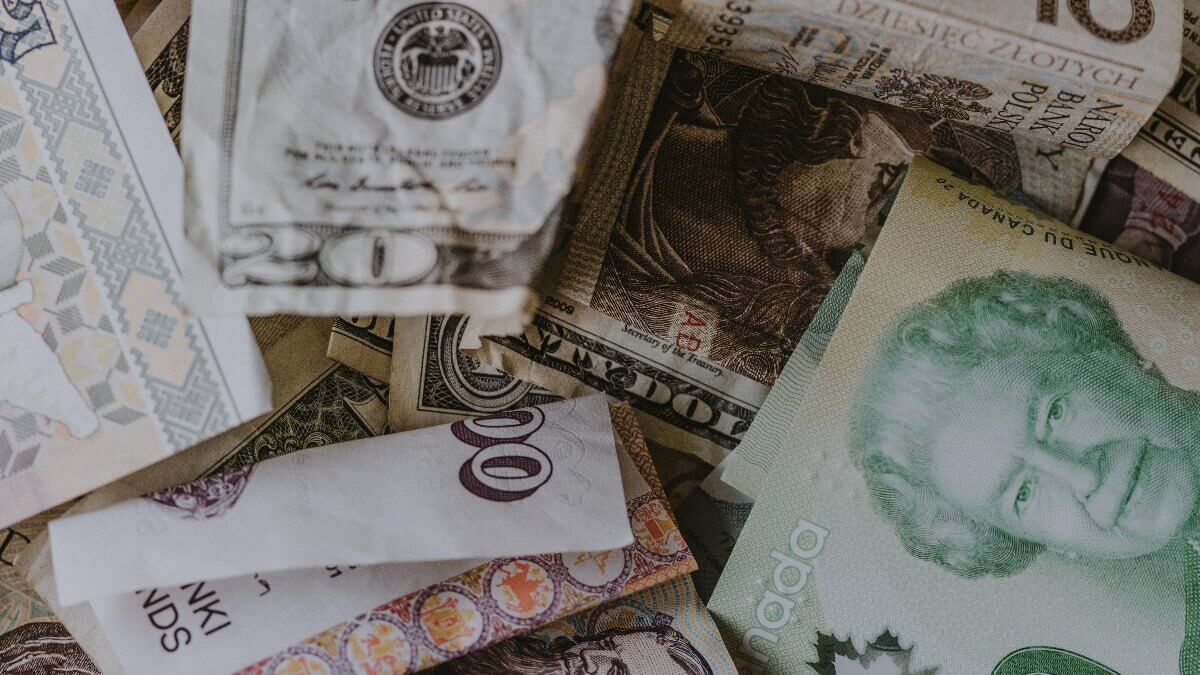How do I transfer money from my U.S. bank account? (Full guide)
If you want to transfer money to your US bank account, but not sure how, you've come to the right place. In this guide, we'll show you the answer.

SWIFT is an acronym that’s often used in banking — but what exactly does it mean and how does it affect you?
We’ve put together a short guide to define SWIFT, and answer the biggest questions about the SWIFT network and how it works.
SWIFT stands for the Society for Worldwide Interbank Financial Telecommunication.
Alright, but what does SWIFT mean in banking? SWIFT is an organization — founded in Brussels in 1973 — that establishes common processes and creates standards for financial transactions¹.
We’ll cover what exactly is SWIFT — and answer key questions like what is a SWIFT payment, in just a moment.
Now that we’ve been over the SWIFT definition, let’s guide you through what’s the meaning and importance of SWIFT in banking.
During the second half of the 20th Century, banks around the world were relying on TELEX transfers to make international transfers.
The TELEX system was slow and lacked the security features necessary for a time when technology was making rapid progress.
That’s when banks from around the world got together and created a consistent, universal solution for getting money moved through different countries. That solution is known as the Society for Worldwide Interbank Financial Telecommunication (SWIFT).
SWIFT provides a secure network that allows more than 11,000 financial institutions in over 200 different countries to send and receive information about financial transactions to each other².
Most of the members of the SWIFT system are banks, but there are other financial institutions who can use it³, such as:
- Brokers and dealers
- Clearing systems
- Investment managers
- Payment and treasury related market infrastructures
- Corporates, non-bank financial institutions
One of the key services SWIFT provides is global financial messaging, carrying over 5 billion secure financial messages a year, to make sure that payments moving between banks on different sides of the globe arrive safely.
SWIFT is key to the way most traditional banks process international transfers, as they know they can rely on the standards and security used within the SWIFT payment and messaging network.
| Other SWIFT banking and business uses include¹ |
|---|
|
SWIFT is a global and politically neutral organization, with responsibilities to help its members respect and comply with local and international laws — including any sanctions imposed as a result of legislation around the world.
That means that the SWIFT network may be important in the imposition of financial sanctions on countries involved in war or aggression.
On 1 March 2022, SWIFT was called upon by the international community, including the US, EU, Canada and UK governments, to disconnect a range of Russian banks from the SWIFT network as a result of Russia’s invasion of Ukraine.
Later, the range of sanctions was reassessed to include some Belarussian banks, in response to Belarussian support of Russia’s aggression in Ukraine⁴.
Removing banks from SWIFT isn’t unprecedented — it happened previously with some Iranian banks, for example. Sanctions like these aim to disconnect banks from international financial infrastructure, making it harder for them to send and receive payments.
This pushes up costs, and slows things down for the banks and countries involved, harming the economy, and — in an ideal world — causing aggressive governments to rethink their policies⁵.
When it comes to making a peer to peer international payment, you can think of the SWIFT network a bit like traveling from one country to another.
It’s not always possible to take a direct flight. Which means you may need to go through a few connecting flights until you get to your destination.
SWIFT works essentially the same way. Your money will travel from one country to another, but to do that there are often correspondent banks involved.
The SWIFT network doesn’t actually transfer funds, but instead it sends payment orders between institutions’ accounts, using SWIFT codes.
It was SWIFT that standardized IBAN (International Bank Account Numbers) and BIC (Bank Identifier Codes) formats. SWIFT owns and administers the BIC system, meaning that it can quickly identify a bank and send a payment there securely.
| If you need to track a SWIFT payment, you’ll need a MT-103 document. You can read all about it in our MT-103 guide |
|---|
SWIFT is a member owned organization, where financial institutions like banks, brokerages, and foreign exchange services are the members.
Members pay an annual fee to be part of SWIFT. There are also fees for secure messages carried by SWIFT to facilitate payments. The cost of these messages depends on the message type and length, and the relationship SWIFT has with the bank itself.
As long as your bank is affiliated with SWIFT, the network can be used to securely communicate a payment order and get your money from one place to another.
However, as a consumer you should know that the costs of using SWIFT are ultimately passed on to you in the form of fees that apply when you send an international transfer.
SWIFT fees are a bit tricky for consumers, because until you know the exact payment route your money is being sent on you may not be able to build a full picture of the costs involved.
That can mean that at the time you confirm your international transfer with your bank, you can’t be completely sure how much your recipient will get in the end.
Whenever you send an international payment you’ll need to be aware that:
|
|---|
If you’re sending money through SWIFT, it can be quite pricey, especially for smaller amounts of money. And, as noted, if your SWIFT transaction will need to go through intermediary banks, each of them normally will levy their own fee.
Though most banks will give you the ability to choose whether you, the recipient, or a combination of both foot the bill for these additional fees, the costs can still add up.
On top of that, if your money will need to be exchanged for another currency, banks can add their own spread (profit) to the rate they offer you. A further cost.
It makes sense to be worried about the fees adding up. This is why Wise can be a good alternative to traditional banking when it comes to making international payments. Wise is a cheap, fast and secure way of moving money overseas.
| 🎯 With Wise you’ll get to |
|---|
|
It’s important to note that for some operations, such as sending USD to other countries where dollars aren’t the main currency, Wise will also use the SWIFT network. But for this type of transaction you’ll be informed if this system will be used and how much it’ll cost you.
SWIFT is just one of the organizations and systems that have changed modern banking forever. And it’s worth it to do your homework to make sure you know what you’re getting when your bank uses the SWIFT network to make an international transfer.
Sources:
Sources checked on 05.10.2022
*Please see terms of use and product availability for your region or visit Wise fees and pricing for the most up to date pricing and fee information.
This publication is provided for general information purposes and does not constitute legal, tax or other professional advice from Wise Payments Limited or its subsidiaries and its affiliates, and it is not intended as a substitute for obtaining advice from a financial advisor or any other professional.
We make no representations, warranties or guarantees, whether expressed or implied, that the content in the publication is accurate, complete or up to date.

If you want to transfer money to your US bank account, but not sure how, you've come to the right place. In this guide, we'll show you the answer.

What are BSB numbers in banking & how do they work? Do you want to find out more about BSB codes? Read more here.

Your full guide to US banking expressions, from ABA to wire.

Sending money abroad should be easy, but there might be some terms you aren't familiar with. So, we'll show you the difference between IBAN vs SWIFT codes.

IOF is a tax on various types of financial transactions in Brazil — including foreign exchange, investments, and credit. It’s levied at a range of rates...

Moving to Peru, or already there? You’ll need to brush up on how residency and citizenship works for foreign nationals living in the country. It centers...